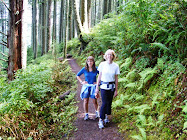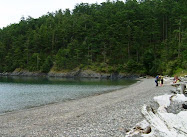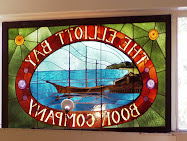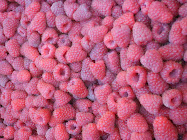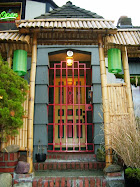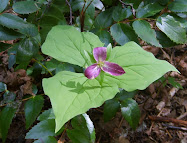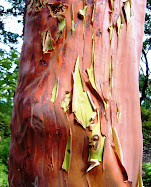Every year around the summer solstice, we see the lowest tides of the year along Salish Sea/Puget Sound shorelines. While there are almost as low tides in December, wouldn't you rather explore the beach in June too?
You'll find me out there clutching my camera(s), roaming the beaches near my home. I'm fortunate that there is a great beach for exploring only a 10-minute drive away. Volunteer naturalists from places like the Seattle Aquarium are out there to answer questions and point things out.
It's a beach party.
About a dozen years ago, a wasting disease gutted the sea star population along the West Coast of North America (I'm not sure about elsewhere). So I've been thrilled the last few years to see so many healthy sea stars, which I grew up calling starfish.
 | |
| Ochre sea stars, crimson red sea cucumbers lurking below to the right. |
Last year I spotted a now-rare sunflower sea star that looked healthy, which was a find. Sea star wasting disease killed more than 90% of the sunflower sea stars, according to the National Oceanic and Atmospheric Association.
 |
| Sunflower sea star, partially in shadow. |
Knowing parking would be difficult near the time of the lowest tide, I came about an hour early and parked at the lot halfway up the hill and walked down, two cameras and my smartphone in hand. After about a 15-minute walk down to Golden Gardens Park in north Seattle, I finally got to the beach and bee-lined towards water's edge.
I stepped carefully, trying to avoid the rich eelgrass habitat and inadvertently stepping on livings things like anemones, crabs, sea stars, or other tidelands life.
“When the tide is out, the table is set” is a familiar saying among Native communities on the Northwest Coast. They developed traditional ecological knowledge that was passed down for generations about intertidal marine resources. I thought of this when I passed a crow jumping around, looking for a meal. And when a squirt of water from a clam burrowed beneath the sand hits me.
Big, flat expanses of exposed sandy beach don't provide the best low tide beachcombing. Instead, I headed to the north beach, where there are more boulders, with sea stars, anemones, sea cucumbers, and such clinging to the large barnacle-encrusted rocks.
So many rich colors, shapes, and textures! I'm no naturalist, but I do wonder how their coloring has evolved.
While I roamed quickly during the relatively short low tide window, trying to see as much as possible, chatting with others, calling out when we spot a juicy find, I considered a different path I might have taken in marine biology. But I didn't consider it for long, as I lacked the patience required for scientific methodology in most of my science classes.
Mostly, when I'm out there at our lowest tides, I'm just excited to spot weird, wonderful, and colorful flora and fauna.
How about you? Have you done much low tide exploring here, or anywhere?
Happy trails and thanks for visiting Pacific Northwest Seasons! In between blog posts, visit Pacific NW Seasons on FaceBook, Twitter, and Instagram for more Northwest photos and outdoors news.

.JPG)


































































